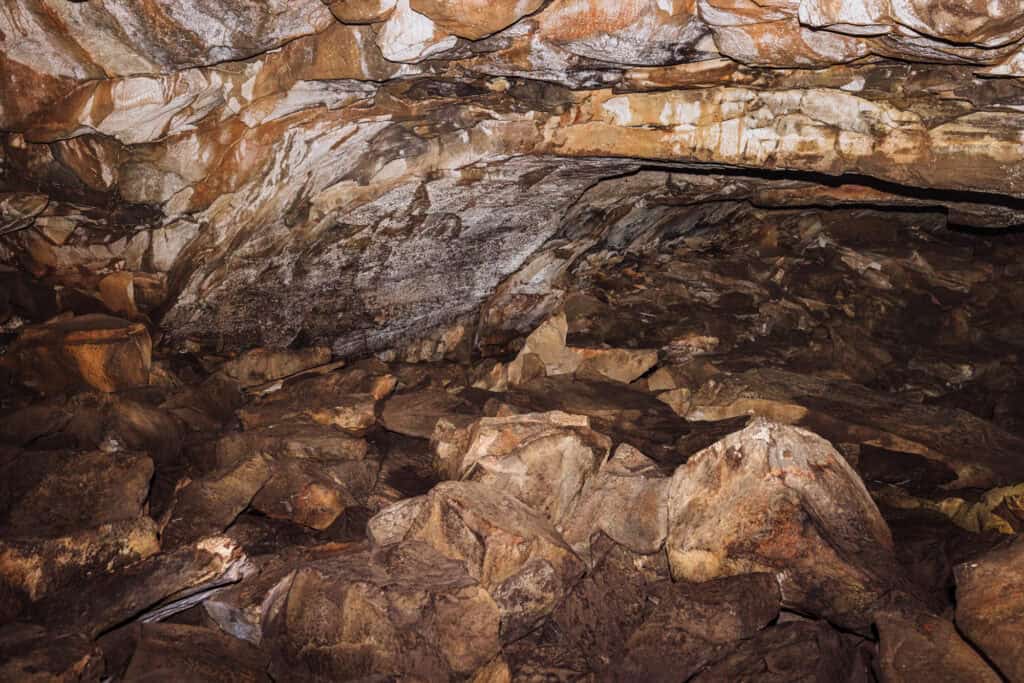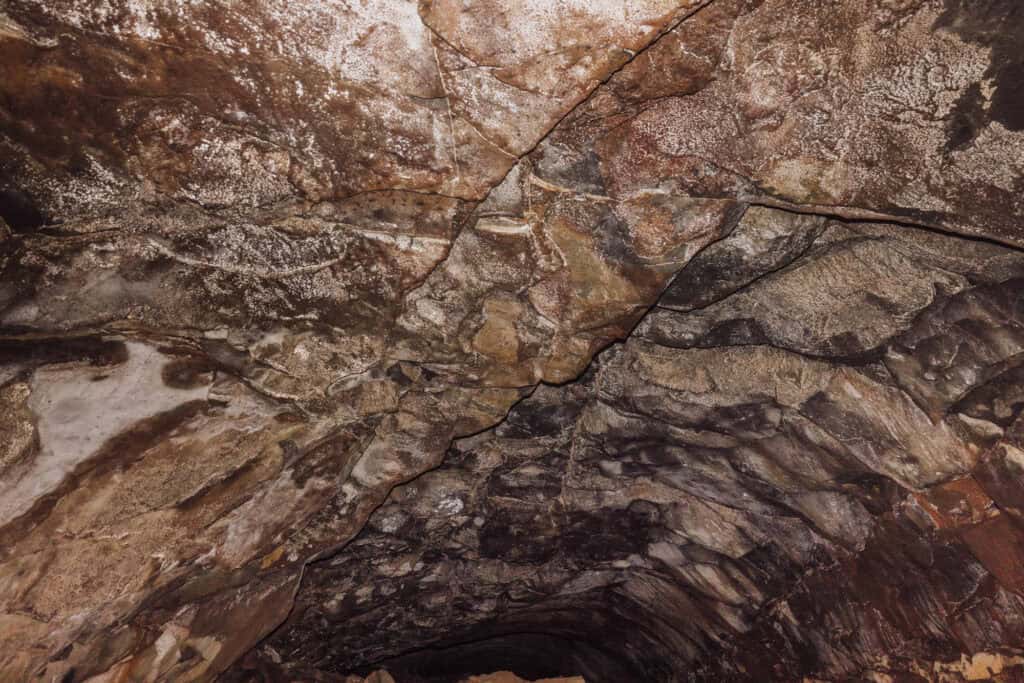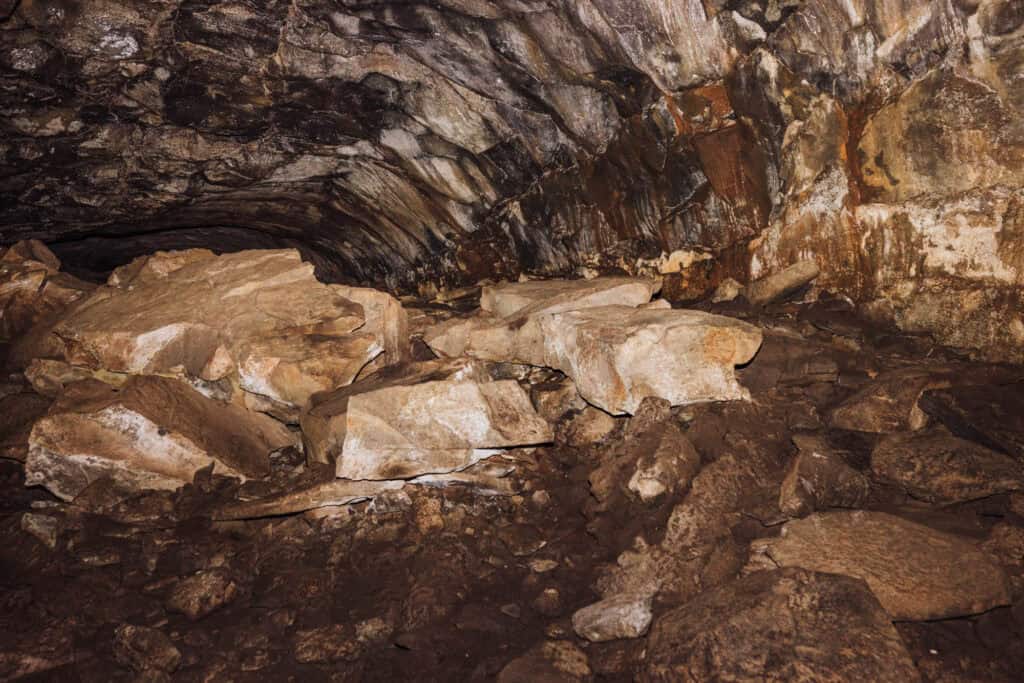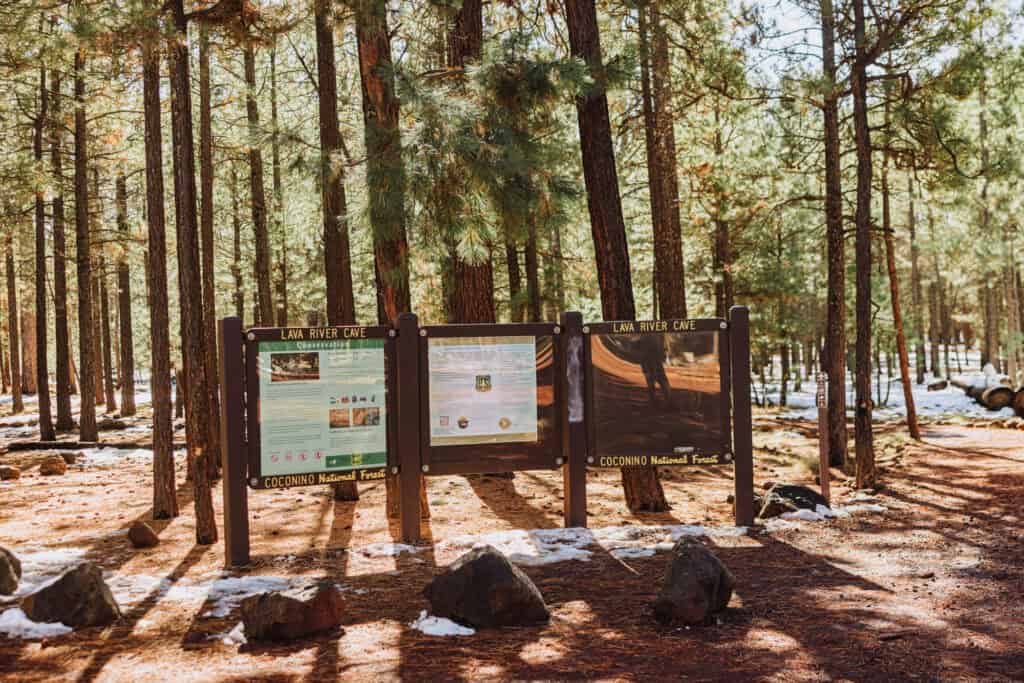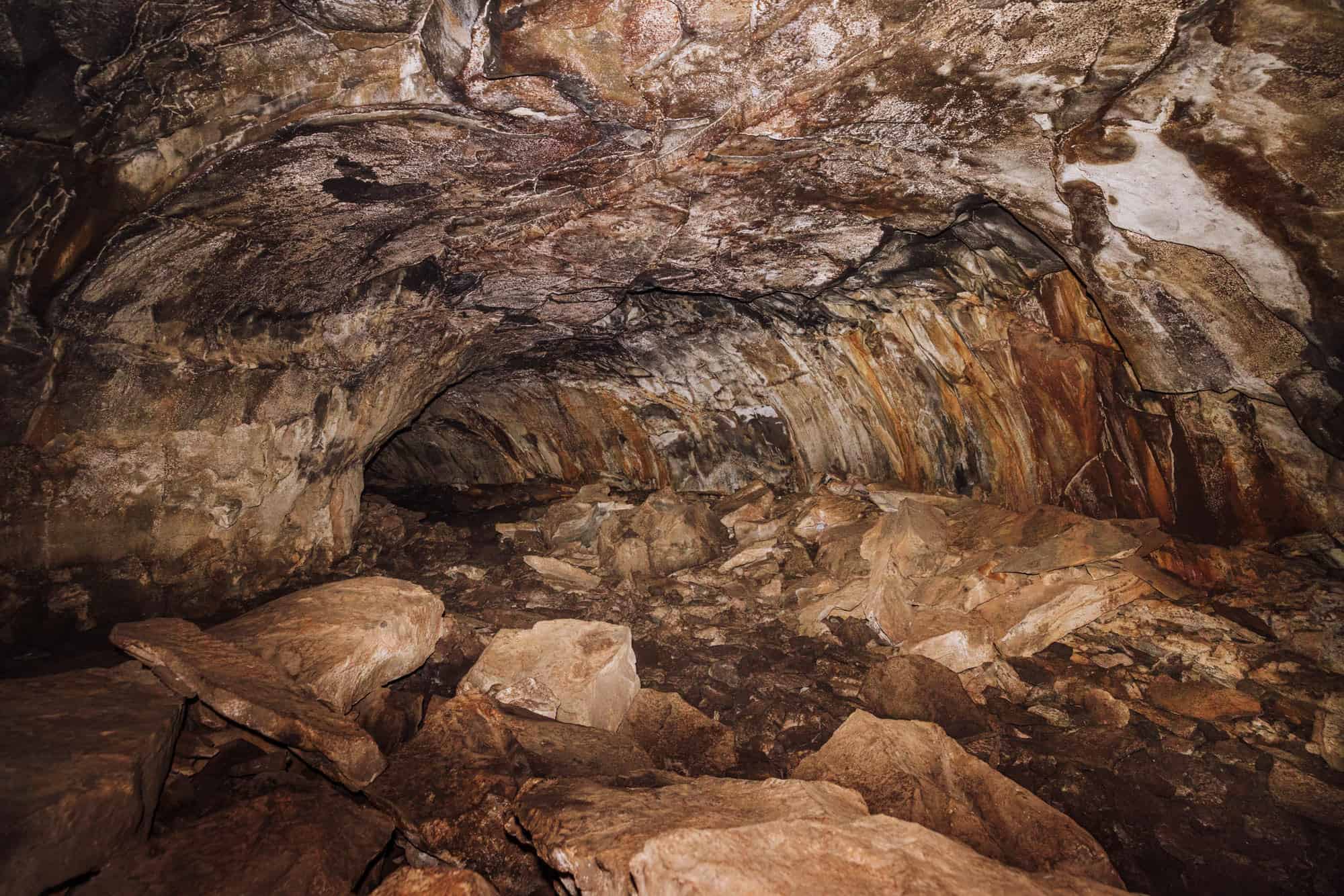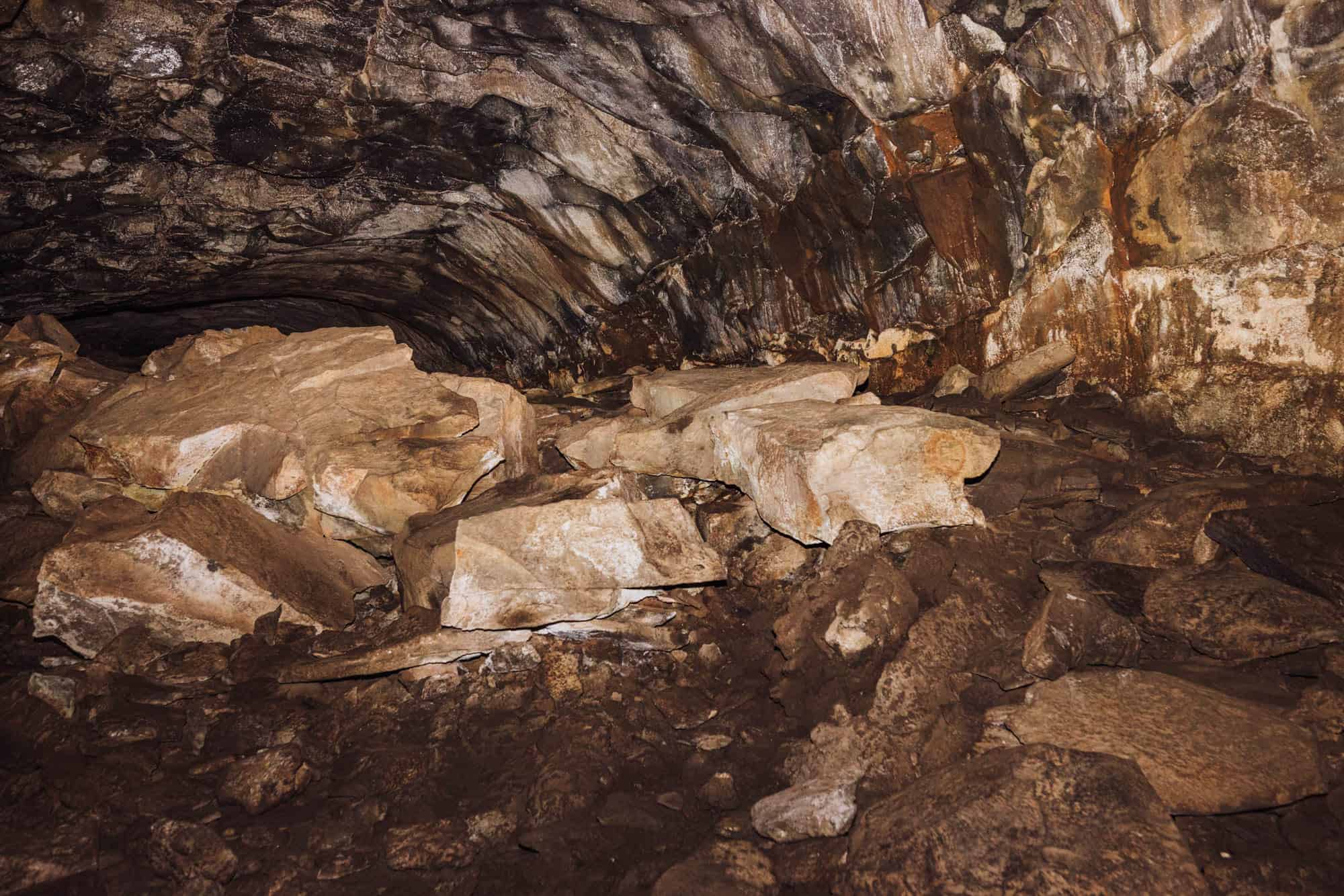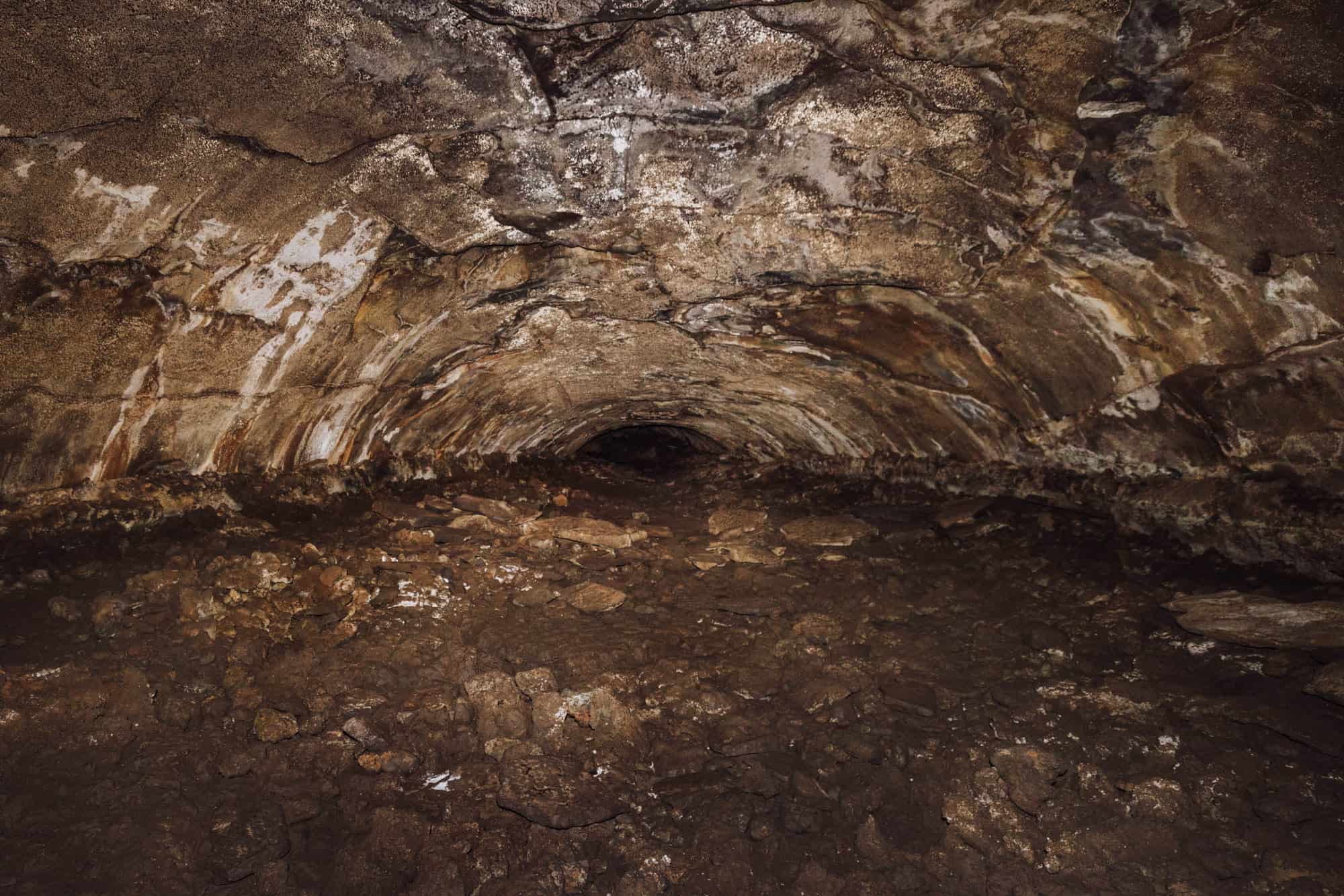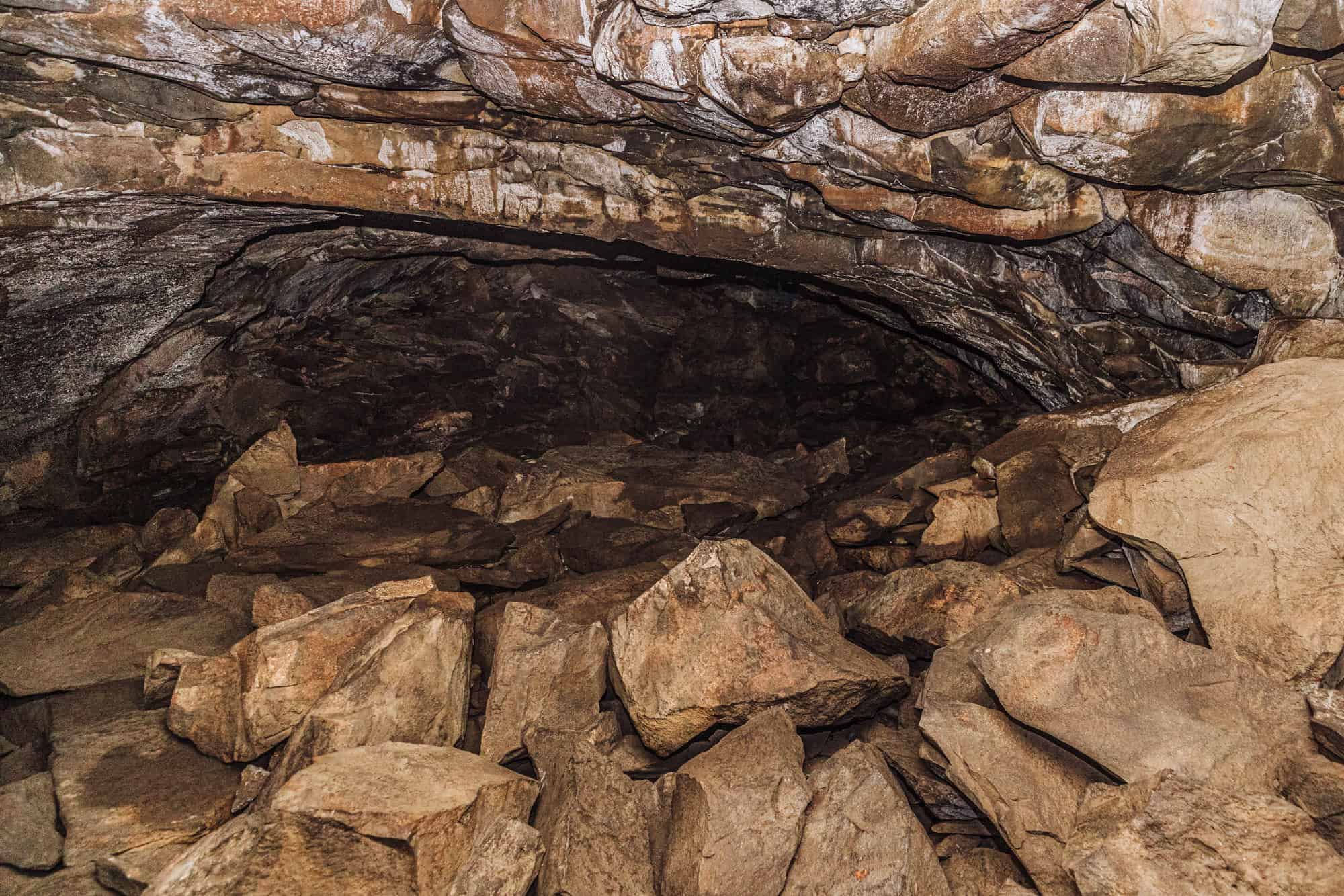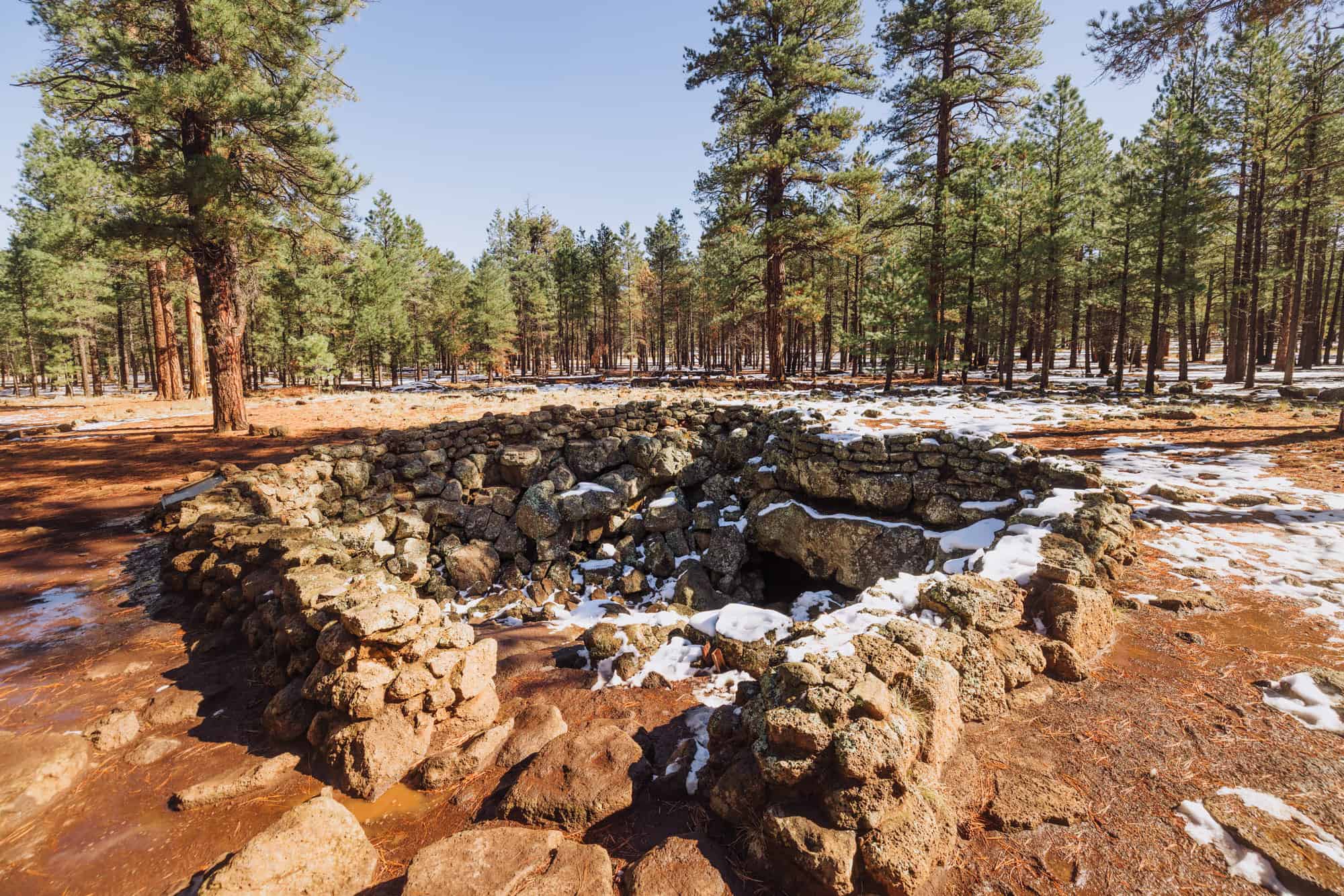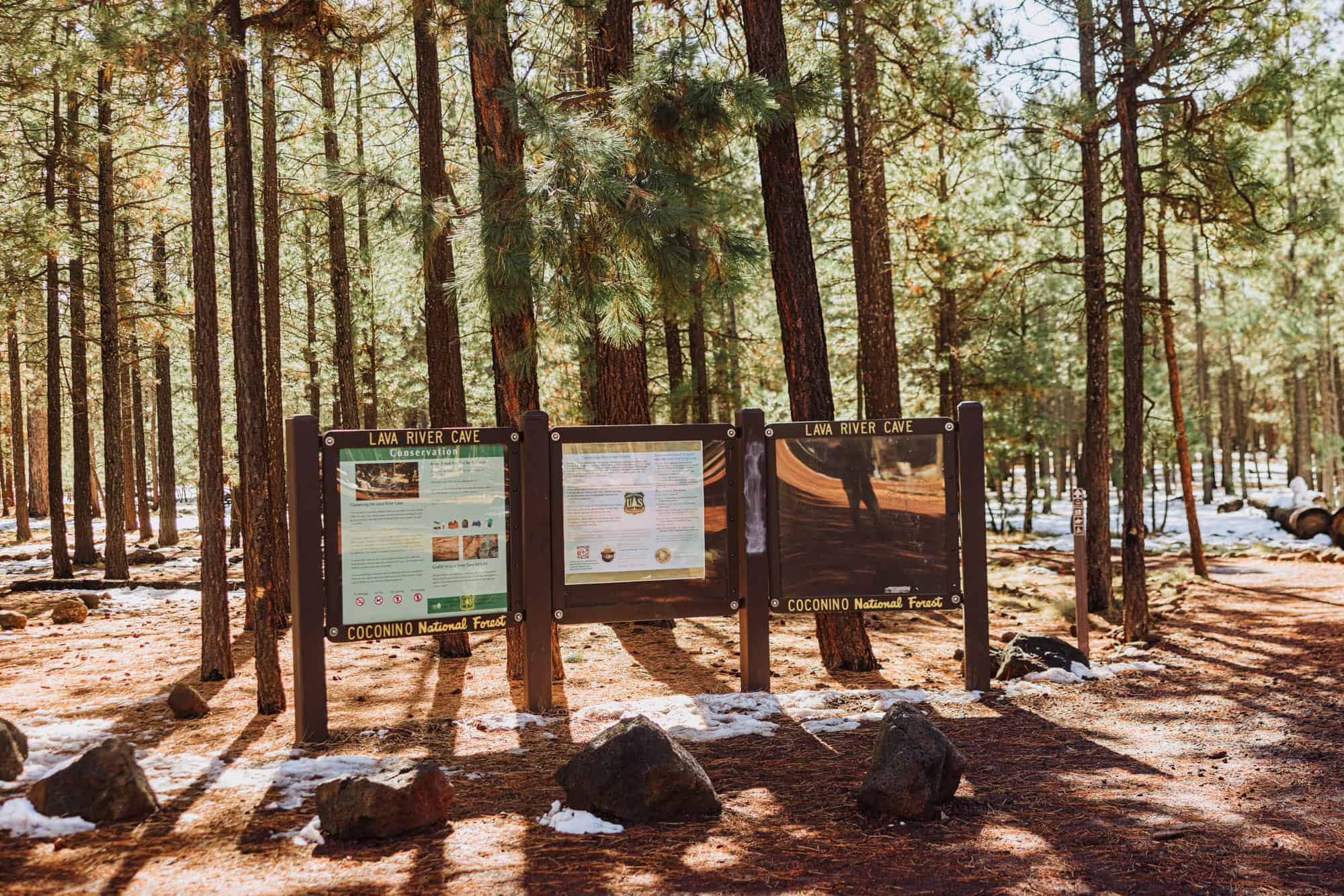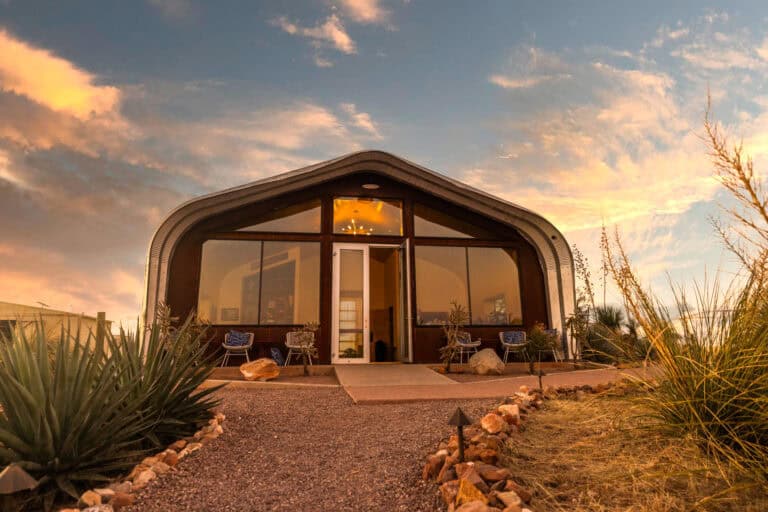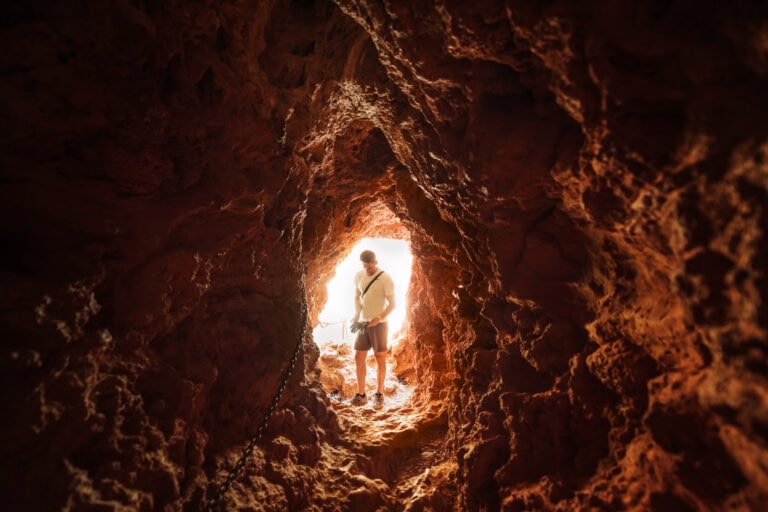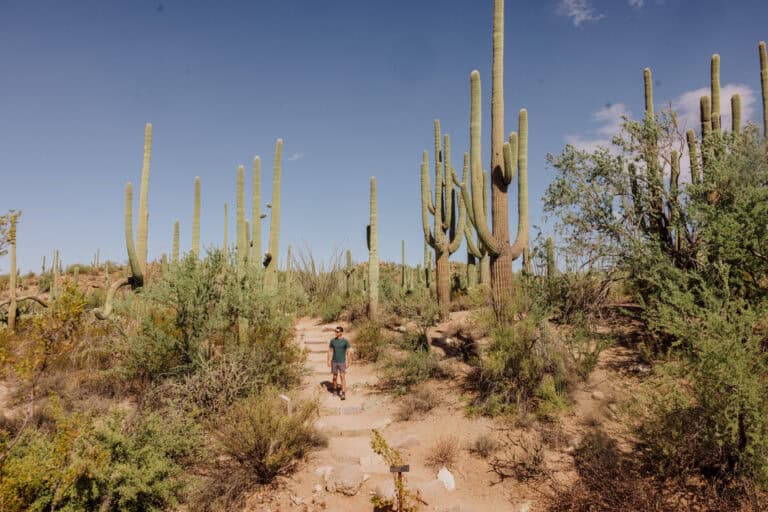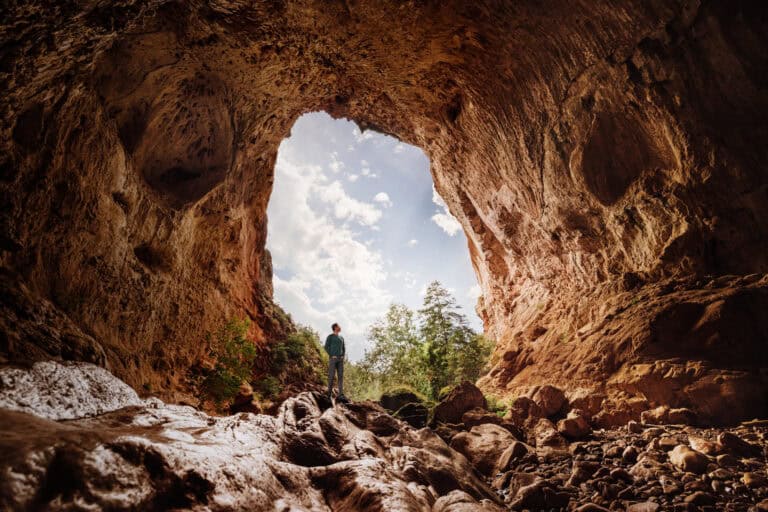The Flagstaff Lava River Caves: Explore the Underground Lava Tubes

Visiting the Lava River Cave near Flagstaff is a unique adventure, which will bring you underground into a natural volcanic tunnel.
The lava tube runs nearly a mile underground. It was formed 700,000 years ago when lava erupted from a volcanic vent nearby.
It’s free and open to the public to explore in the Coconino National Forest.
Key Info About the Lava Tubes
- It’s pitch black, so you’ll need a headlamp or flashlight.
- There are no entrance fees.
- No reservations are required.
- It’s a 20-mile drive from downtown Flagstaff.
- Once underground, the lava tube is 1 mile long.
- In the winter, the USFS dirt roads to the entrance close.
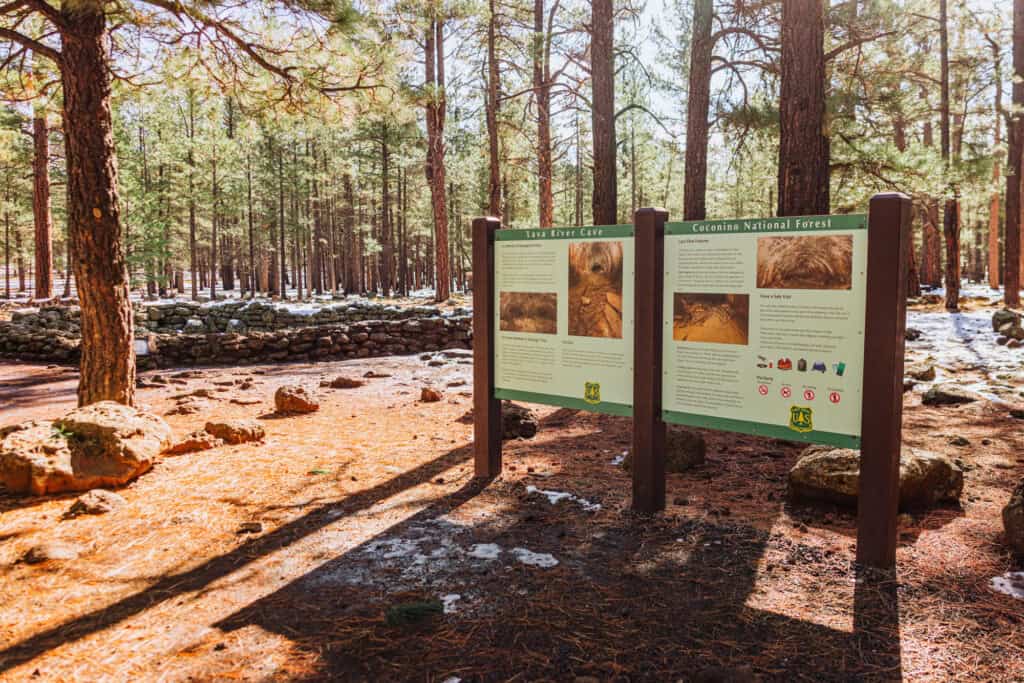
Map & Directions to the Lava River Cave
Here’s a map of the location. You can see: it’s in a rural area of the Coconino National Forest, northwest of the city of Flagstaff.
It’s a 20-mile drive from downtown to the parking lot, which will take about 30 minutes.
Directions from Flagstaff
- Take Highway 180 West.
- Go past the entrance for Arizona Snowbowl.
- Take USFS Road 245 for 3 miles.
- Take Fire Road 171 to 171B for the parking lot.
Parking & the Hike to the Entrance
The parking area is pretty spacious, with room for a couple dozen vehicles.
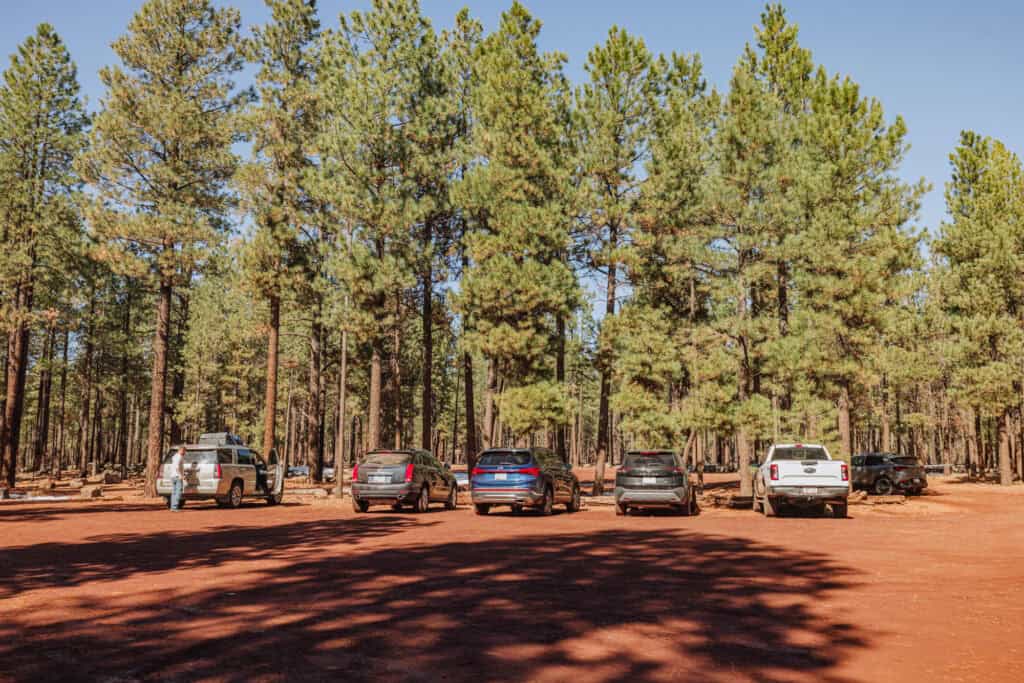
There’s a bathroom, a message board about the fire danger, and some displays about the geological history and formation of the Lava River Cave.
There’s not much of a hike required at all. A path, partially wooden and partly dirt, will take you from the lot to the entrance of the cave.
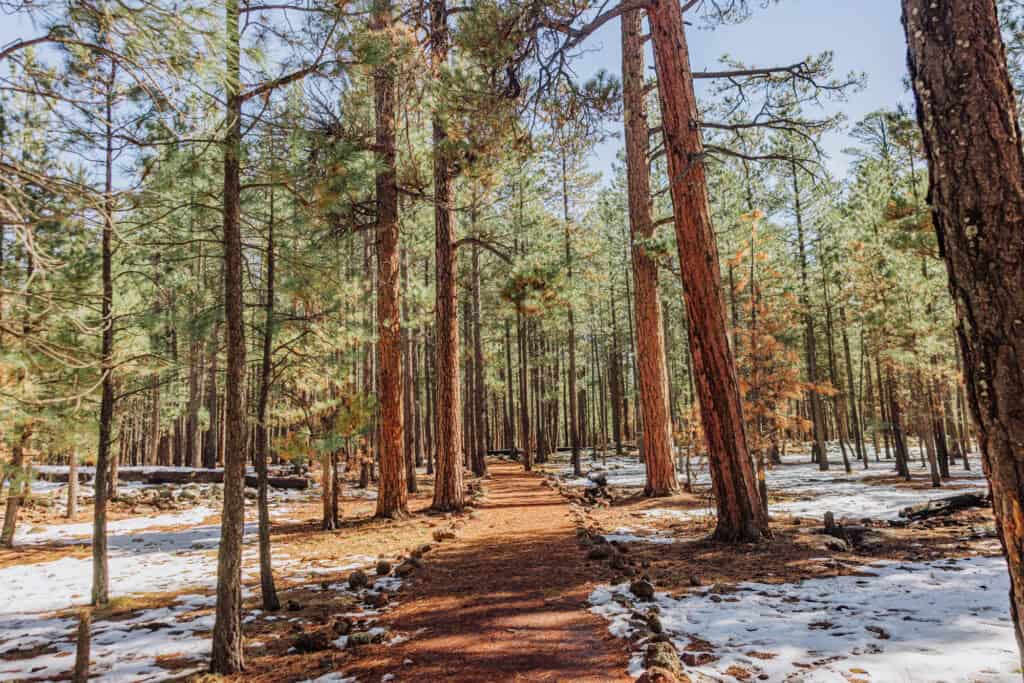
Inside the Lava River Cave
I can’t stress enough: it’s pitch black! You’ll lose all light pretty quickly, so your phone’s flashlight won’t be enough. I know from experience!
Entering the Cave
The Lava River Cave’s entrance isn’t anything spectacular. It’s a circular rock structure, without any kind of manmade steps down.
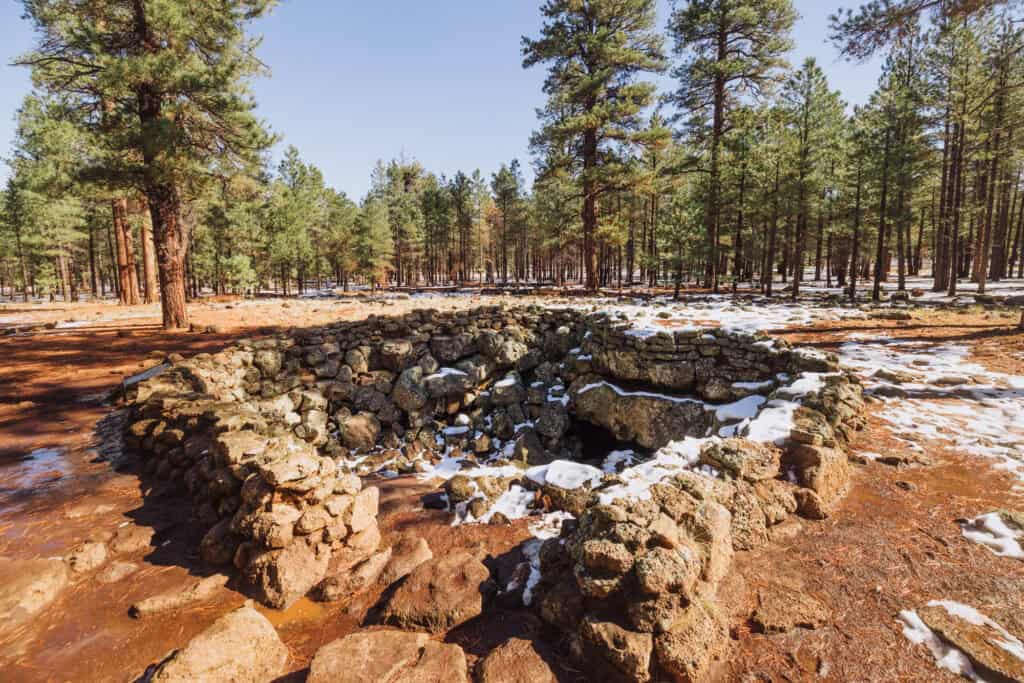
Be prepared to be climbing over giant rocks at a decline. (The climb back out is much easier!)
You can see: you’ll have to crouch to get in at the very start.

Exploring the Lava Tube
The path levels out, and even flattens out at some points inside, after the initial descent down the boulders.
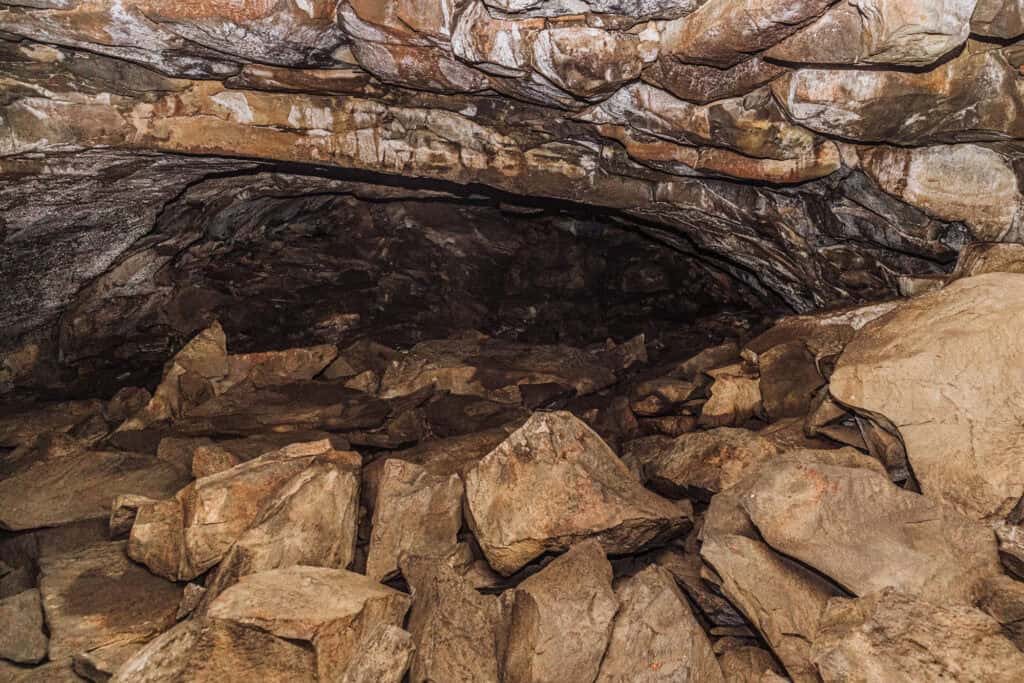
Ceiling Height
The ceiling changes height, from low points where you may have to duck your head, to as high as 30 feet in some sections.
This variation is due to the uneven cooling and collapse of the lava tube over time, creating both wide, towering chambers and narrow, low-clearance areas.
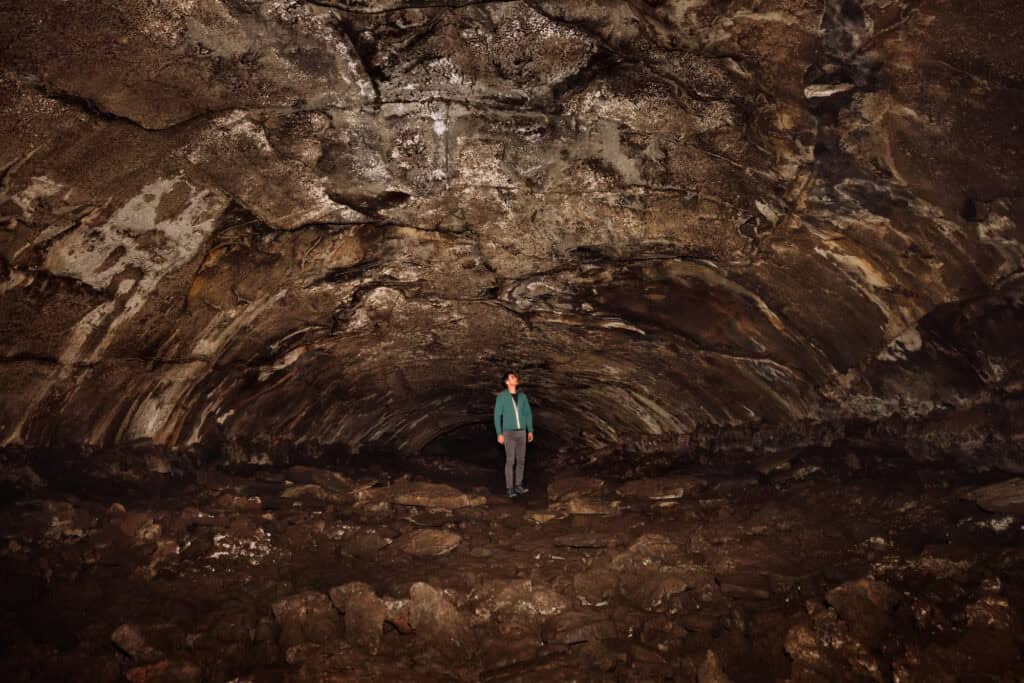
Cave Markings
You’ll see flow lines on the walls, horizontal markings and ridges that show the different levels of lava that flowed through the tube.
Up above in spots, you’ll see drip stalactites, or lava stalactites, which were formed by molten lava dripping as it cooled.
Parts of the floor are covered in broken boulders which fell from the ceiling. Collapses have naturally occurred over the centuries as the rock weathers and shifts.

What to Bring
Let’s go over a checklist of what you should bring if you’re visiting the Lava River Cave.
- Headlamp or flashlight (for each person)
- Sturdy hiking sneakers
- Layered clothes (even in the summer, since it stays cool inside)
Other things to remember on a visit:
- No dogs or pets are allowed.
- Use the bathroom beforehand, so you don’t have to go inside.
- Please don’t deface cave surfaces. Old graffiti has been completely removed.
- No dumping of trash or toilet cartridges.
- There’s no camping nearby.
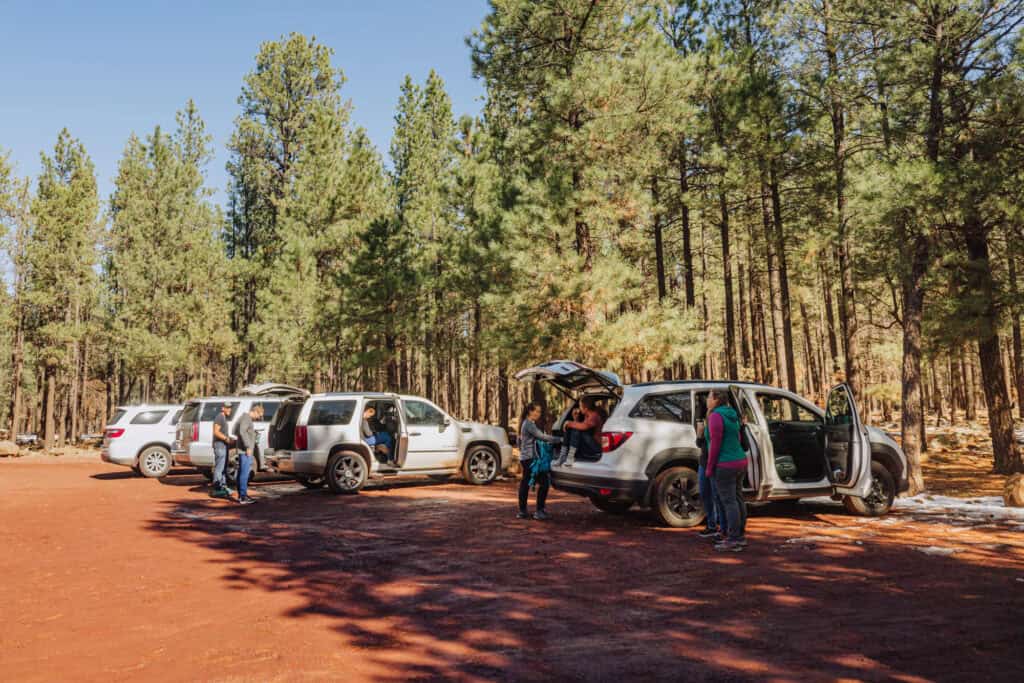
The Best Time to Visit the Lava Tube
Inside the Lava River Cave, the temperature hovers between 35 and 45 degrees Fahrenheit year-round. Even on a hot summer day, it may be 90 outside, but you’ll find a nice cooldown underground.
Visiting in Summer
Summer’s probably the best time to visit the cave, since the weather is sunniest and dryest. Keep alert about any wildfire dangers or closures in the area before making the trip. And even though it’s hot outside, bring layers to wear underground because temperatures drop quickly.
Visiting in Fall
Fall is also a great time to visit the cave. If it’s been rainy, expect the Forest Service roads to be muddy. While the cave entrance is surrounded by Flagstaff’s famous Ponderosa Pines, driving through the area you’ll see the aspen trees turn bright yellow in September or October.
Visiting in Winter
While you can visit the cave in the winter, you’ll likely have to ski in. The Forest Service roads usually close through the winter months due to snowfall.
Visiting in Spring
Once the snow melts and the roads open, just beware that they’re likely to be muddy and full of ruts.
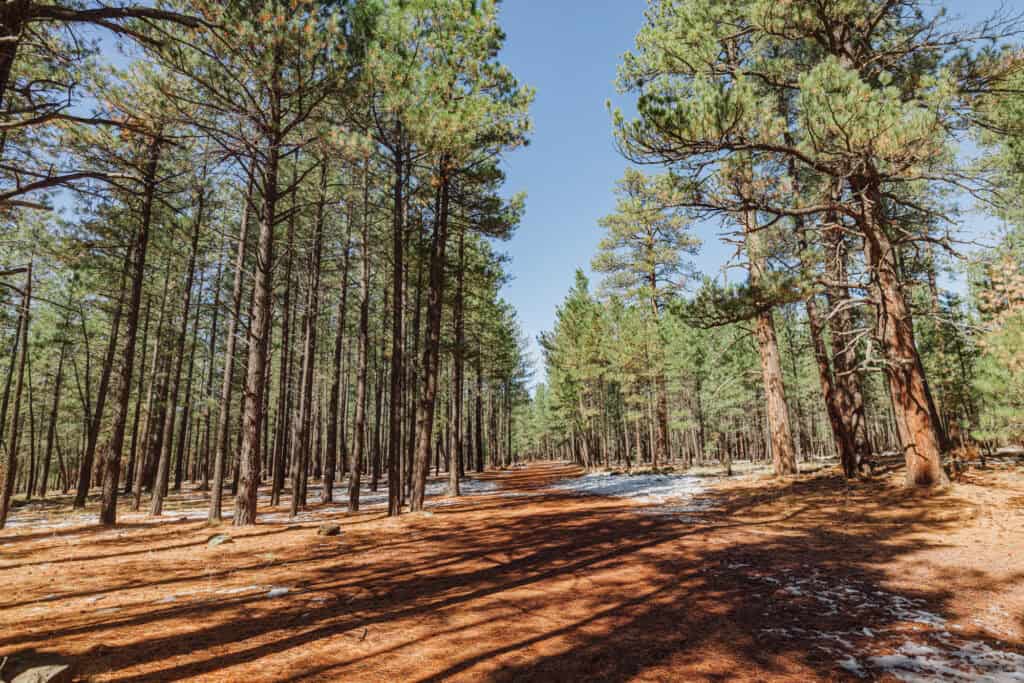
How the Lava Tubes Formed
The Lava River Cave formed approximately 700,000 years ago during a volcanic eruption from a nearby volcanic vent, likely part of the San Francisco Volcanic Field. Here’s how it happened:
During the eruption, highly fluid basaltic lava began flowing downhill. The outer layers of the lava cooled and hardened as they were exposed to the air, forming a solid crust.
Beneath this hardened crust, molten lava continued to flow like a river, insulated by the solidified surface above it. Over time, as the eruption slowed, the molten lava drained out of the tunnel, leaving behind a hollow tube.
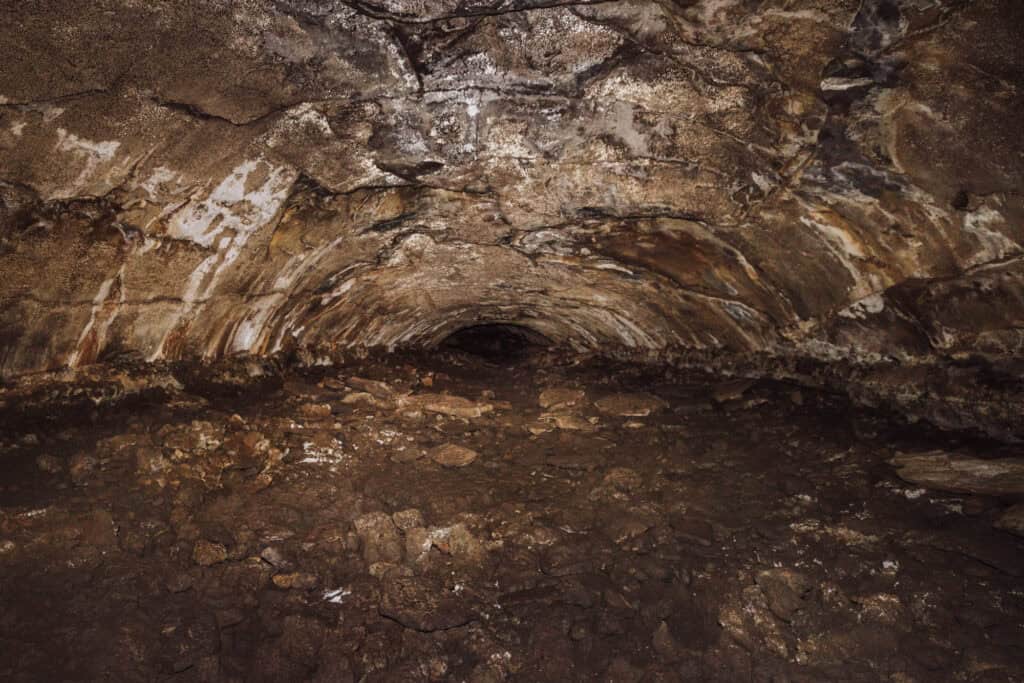
Other Lava Tubes in the World:
Lava tubes are found in volcanic regions worldwide, offering unique underground adventures. Here are some notable destinations where you can explore lava tubes:
- Ape Cave (Mount St. Helens, Washington)
- Thurston Lava Tube (Hawai’i Volcanoes National Park, Big Island)
- Lava Beds National Monument (California)
- Crater of the Moon National Monument (Idaho)
- Jeju Island Lava Tubes (South Korea)
- Vatnshellir Cave (Iceland)
- Undara Lava Tubes (Australia)
- Kazumura Cave (Hawai’i)
The Cave’s Discovery in the 1900s
The Lava River Cave near Flagstaff was discovered in 1915 by a group of lumbermen working in the area. While exploring the surrounding forests, they stumbled upon the cave’s entrance and ventured down into the dark
The cave was used for ice storage in the years after its discovery, thanks to the cool, stable temperature even through the summer months.
The thick basalt rock of the lava tube provides excellent insulation, maintaining the cave’s temperature between 35°F and 42°F. The cave’s design allows cool air to settle inside while keeping warm air out, creating an environment ideal for storing ice, even in the summer.
Its location near Flagstaff made it a convenient resource for early settlers and businesses before modern refrigeration was available. Ice harvested or brought in during the winter could be stored in the cave for use through the spring into the summer.
Is it a Lava River Cave or Lava Tube?
The terms lava river cave and lava tube are often used interchangeably, but there’s a subtle distinction based on geological context:
Lava Tubes
- A lava tube is the correct geological term for the hollow space left behind when the surface of a lava flow hardens, and the molten lava inside continues to flow out, leaving a tunnel-like structure.
- This term is more precise and widely used by geologists.
Lava River Caves
- The term lava river cave is less common and often used to describe lava tubes that are accessible and explored as caves.
Flagstaff’s Lava River Cave
In the case of the site near Flagstaff, it’s a classic example of a lava tube, which is accessible, explored, and officially known as the Lava River Cave.

FAQs About the Lava River Cave
Let’s go over a few frequently-asked-questions.
Is the cave good for families and kids?
It’s pitch black, and full of giant rocks and obstacles, but you’ll see children (elementary school age) climbing through all of it.
It might be a spot to skip if you have a bad knee or hip, and I wouldn’t recommend a parent carrying a baby or toddler on his or her back.
Otherwise, I’d say it’s a great active day for kids.
Why aren’t dogs and pets allowed?
It’s mostly because they’ll pee inside, and the stench of urine is awful and lingers in the cave. Plus, there’s a danger factor. They could catch a paw between the rocks.
Is it open year-round?
Yes, but as mentioned: the Forest Service roads to the entrance aren’t plowed in the winter, so you’d likely have to ski in.
How long does it take to hike through the cave?
It depends on how deep into the cave you go, and how quickly you maneuver over the boulders. I’d budget two hours for a visit.


